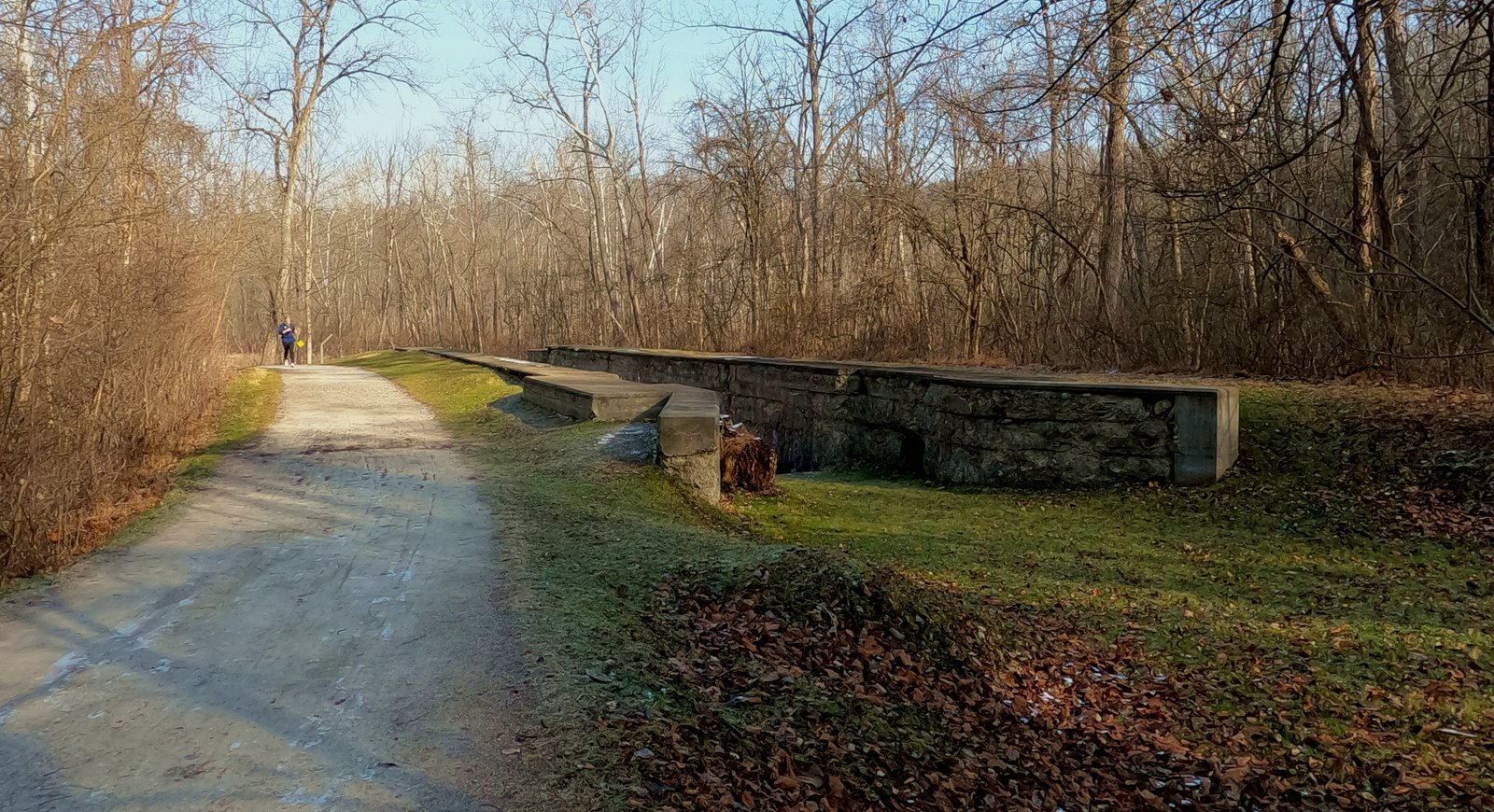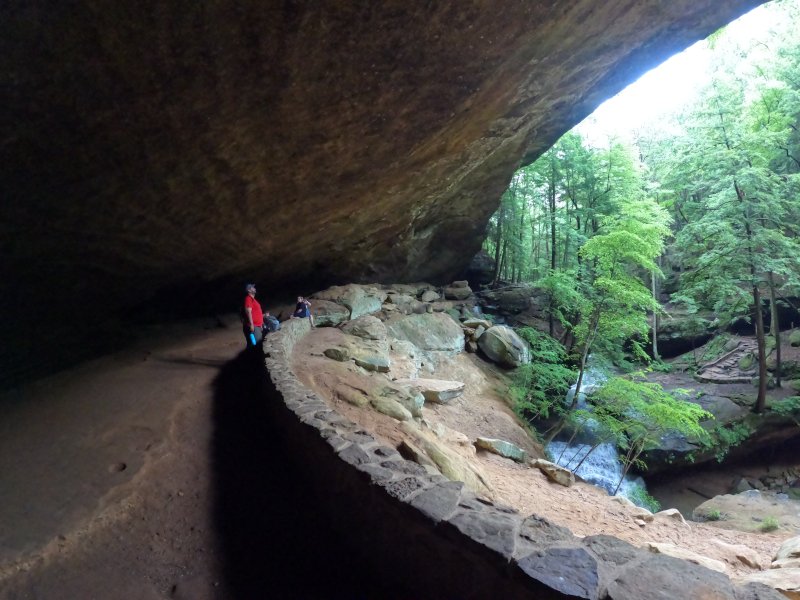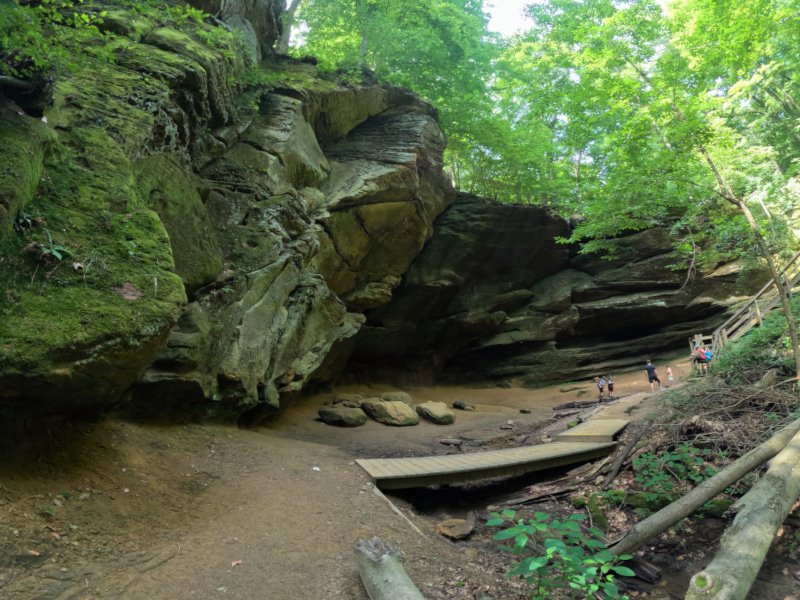Uncover Ohio’s Chilling Secrets: Exploring the Top Ten Haunted Locations in the Buckeye State!
Get ready to embark on a chilling adventure across the Buckeye State as we explore Ohio’s top ten scariest places! From ancient cemeteries to haunted mansions, these sites are teeming with ghostly legends and spine-tingling tales. Whether you’re a seasoned paranormal investigator or just someone who enjoys a good scare, these eerie locations promise to send shivers down your spine. Join us as we unveil the haunting stories behind Ohio’s most notorious spirits!
“Hi, I’m Jannette Quackenbush from “Dark Journeys with Jannette.” If you’re looking for a list of the top haunted places in Ohio, I can help! I’ve visited these locations, hiked through them, and conducted ghost hunts. For the past 35 years, I’ve researched haunted sites and written about them in more than 15 books for just Ohio’s paranormal places. So, here are my recommendations if you want to know about the real haunts—not just those defined by people who haven’t experienced them. For Ohio’s scary places by county, check out Haunted Ohio!” You can find Jannette’s Books on Amazon!
“And yes, there are tons more of haunted places in Ohio! These are just a few. For Ohio’s scary places by county, check out Haunted Ohio!”
Top 12 Haunted Ohio

Hope-Moonville Road Zaleski, Ohio
Moonville Tunnel: Theodore Lawhead was an engineer for the Marietta & Cincinnati Railroad. On a bitter November night in 1880, his locomotive screamed through the black hills of southern Ohio. Somewhere near Moonville, the dispatcher failed to warn the eastbound train of another barreling west on the same line.
They met on a blind curve, half a mile from the tunnel. The impact was thunder and iron and flame. When the smoke cleared, Engineer Lawhead and his fireman, twenty-five-year-old Charles Krick, were dead—burned and broken amid the twisted rails.
The wreck left a stain on that lonely stretch of track. Trainmen began refusing the route after dark. They spoke of a wavering light drifting near the tunnel—the pale flicker of a lantern moving where no man should walk. Those who slowed their engines to look saw him: a white-robed figure gliding down the hillside, eyes glowing red, a halo of tiny lights shimmering around his head.
And then, just as suddenly, the light would vanish—leaving only the echo of wheels on the rails and the whisper of a man who never finished his run.
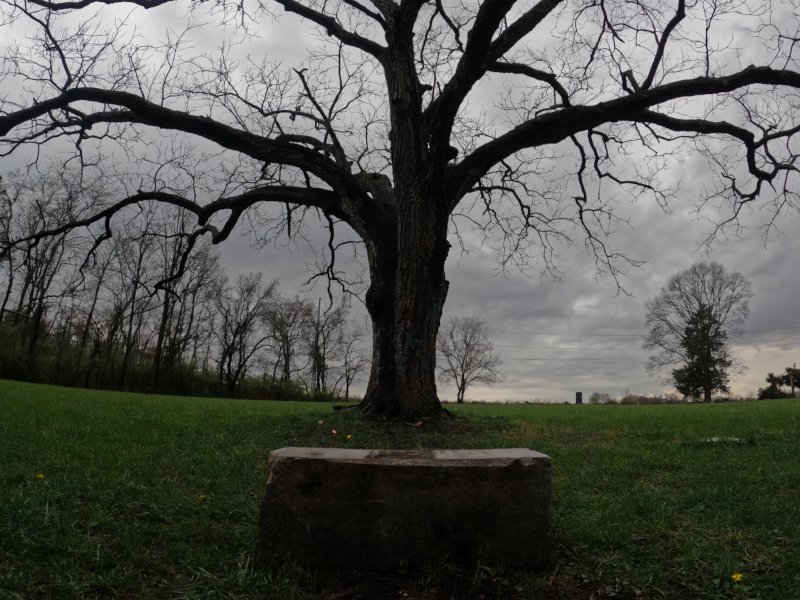
Union Cemetery Chillicothe, Ohio
Elizabeth’s Grave: The oldest accounts of the haunting reveal that a family buried a woman’s corpse by the church, near an old oak tree, over a century ago.
After a storm uprooted the tree or vandals toppled the gravestone, a caretaker mistakenly returned the tombstone to the wrong spot. Eventually, it ended up discarded in a distant area.
Strangely, whenever the headstone was removed, it reappeared under the tree where the ghost had been seen, then faded away. Those who moved it, whether for fun or malicious intent, faced terrible misfortune until their deaths.

Groveport Road, Grove City Columbus, OH
Wooly Burger Cemetery: Some have spotted a Bigfoot-like creature known as the Woolly Booger in the shadows near Little Pennsylvania Cemetery and Big Darby Creek. Local lore tells of a man who butchered his family before killing himself, returning as a vengeful spirit trying to harm those who enter his family plot.
There might have been a boogeyman nearby. In 1957, the body of a young woman was discovered near Darbydale, wrapped in a bedspread and stuffed in a feed sack. The murder remained unsolved, leading parents to caution their children about a boogeyman lurking nearby. Some believe he could still be out there.
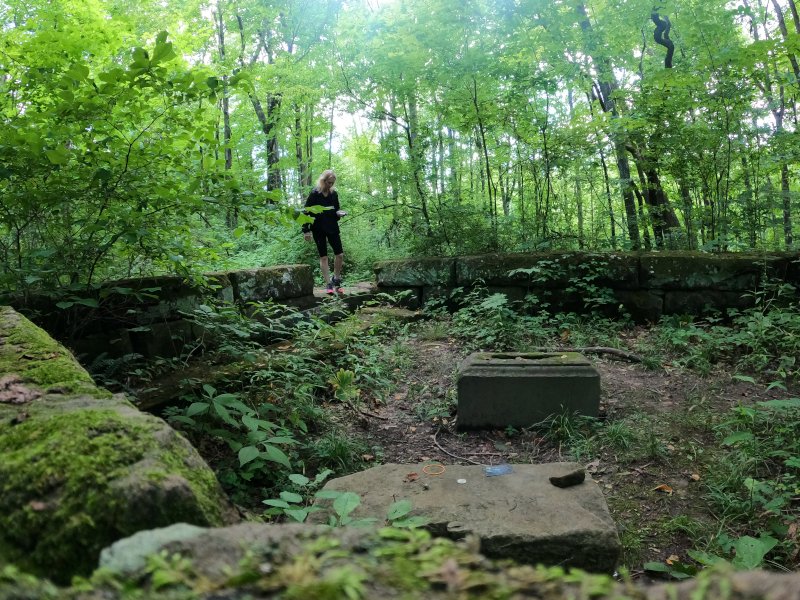
West Branch State Park, Ravenna, OH
Witch’s Grave: Hidden deep within the shadowy woods of West Branch State Park, the remnants of the Elliott Family Cemetery lie in ruin—gravestones sunken and choked by serpentine vines, the forest itself seeming to conspire to erase all trace of the dead. Rediscovered by the Elliott Lake Club in the 1920s and briefly restored, the cemetery was soon abandoned once more, left to decay in silence and darkness when the state took the land.
At its center stood the grave of a seventeen-year-old girl. Most of her epitaph was gone, but one line remained: “As you are now, so once was I.”
The grass around her grave never grows. The air is always colder there. Some say she didn’t die naturally. Others say she never died at all. Across the creek lies a heap of heavy stone—old settlers’ way of pinning down the dead accused of witchcraft so they wouldn’t rise again. But the stones shift sometimes, as if something underneath still moves. In 1969, a group of vandals found the place. They smashed the girl’s marker and mocked the verse on her grave. Within weeks, misfortune swallowed them—accidents, madness, disappearance. One boy was last seen muttering about eyes in the trees.
Now hikers whisper of a woman that crawls between the trunks, her back bent, her hands dragging the ground. Her face changes—empty sockets one moment, too many eyes the next. They say she woke when her grave was broken. And she’s still looking for the ones who did it. Cursed they are. And cursed are those who vandalize the cemetery again. If you find the pile of stones—don’t touch them.
Don’t look too long. Something beneath is still waiting to rise.

Hills and Dales Metropark Kettering, OH
Patterson’s Tower rose in the 1940s, built from condemned stone torn from the corpses of old buildings. It was meant as an observation post, but stone remembers—and some stones never rest easy.
By the 1960s it was a ruin, its roof peeled away, its walls scrawled with curses. Locked gates couldn’t keep out the curious. Teenagers still crept inside, daring each other to climb.
In 1967, a storm split the sky. Two friends, Ronnie and Peggy slipped through the gate, laughing as thunder shook the stairs. Halfway up, lightning struck. When Ronnie came to, the air reeked of iron. Peggy lay twisted on the landing, eyes wide, mouth frozen around his name.
Now, when storms roll through, people see a figure in the tower—wet hair hanging over its face, arms jerking as it drags itself down the steps. It never reaches the bottom. They say it’s Peggy, still trying to escape the storm. Or what’s left of her—burned hollow, moving only because it can’t stop. If the air smells like copper and lightning flashes without thunder, don’t climb. The tower remembers her. But it waits for you.
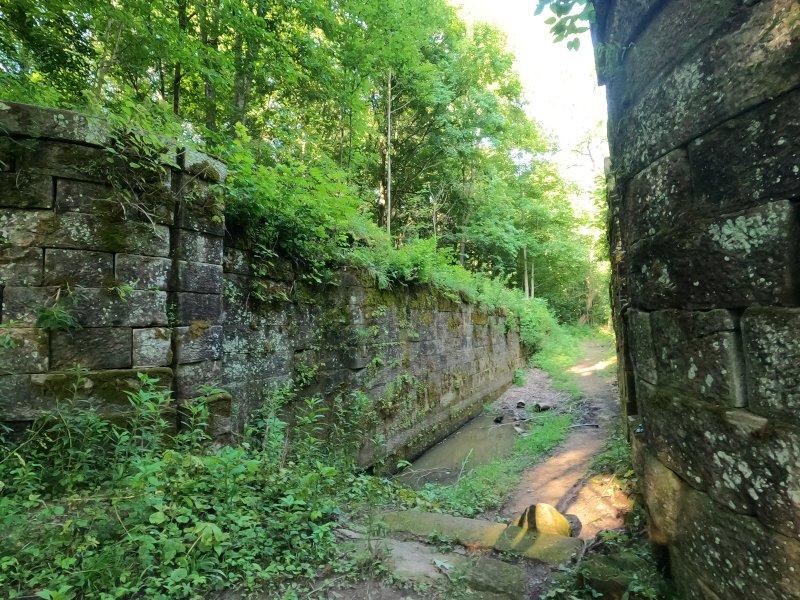
Beaver Creek State Park East Liverpool, OH
Gretchen’s Lock: E.H. Gill was the chief canal engineer and a Royal Engineer’s School graduate in Paris who traveled by ship from France with his wife and 7-year-old daughter,
Gretchen, to help build the Sandy and Beaver Canal.
Tragedy struck halfway to the United States when Gill’s
wife was washed overboard and drowned. Grief-stricken,
the father and daughter continued to their new life.
Gill worked with the Sandy and Beaver Canal system and
helped build the lock above Sprucevale. His daughter
followed him from camp to camp, living in the wild area
around the new canal. During this time, Gretchen contracted malaria. One afternoon, as her fever mounted, she made her father promise to take her home and bury her with her mother—“I want to join my mother,” she pleaded. Wanting to please
her, the father nodded that, indeed, he would. But, before
the day ended, Gretchen was dead.
Temporarily, workers prepared a crypt in the masonry
of Lock 41 just above Sprucevale, and Gretchen was
interred in a small casket there. U.S. economy collapsed in 1837, and Gill resigned from his position to return to Europe. He took Gretchen’s body from her interim tomb in the lock and placed it on the ship to return home for reburial. However, the vessel Gill was sailing on was lost at sea during a storm on the return voyage. He and Gretchen would join her mother just as she begged him to do. Still, Gretchen returns to the lock once in a while, murmuring her dying prayer, “Bury me with my mother.”

Swift Mansion – (Gore Orphanage)
Light and Hope Orphanage Amherst, OH
Gore Orphanage: Also known as Light and Hope Orphanage, was operated by a cruel man who pretended to care for children in need. In truth, he exploited them as forced, enslaved laborers. The children were victims of Sprunger’s greed, masked by a false facade of evangelism and charity. Although the orphanage has since been closed down, some of these children return in ghostly form to relive the tragedies of their past.

Mary Stocum’s Grave St. John’s Lutheran Church Cemetery Coshocton, OH
Mary Stocum’s Grave: A headless ghost walks the area around an old abandoned cemetery in the woods. Hundreds of Coshocton teens have grown up hearing the story of the headless woman who walked the isolated cemetery, and they have taken the muddy-road trek to see her search for her head.
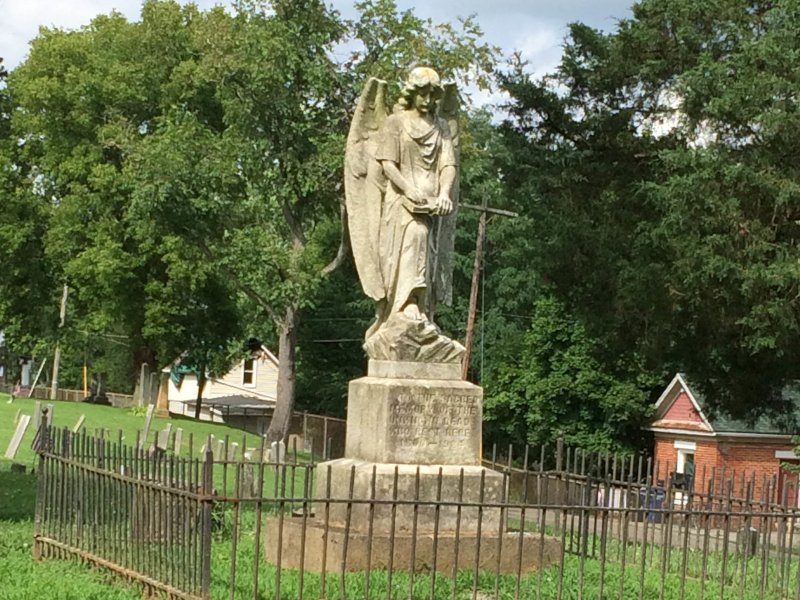
West State Street Cemetery Athens OH
West State Street Cemetery: At the entrance of West State Street Cemetery in Athens stands a statue of an angel that watches over those whose markers have long since disappeared. She holds a book, and it is believed that she writes the names of the unknown within its pages, ensuring that the living do not forget them. Passersby have reported seeing her weeping, moving, and even fluttering her wings. Orbs of light hover and dance around the angel, and some believe these lights make their way to each lost grave.
Top 10

Ohio State Reformatory, Mansfield, OH
Ohio State Reformatory: The Ohio State Reformatory in Mansfield operated from 1896 to 1990 and housed over 154,000 inmates. It accepted offenders who were too old for juvenile corrections or who committed less severe crimes than those sent to the Ohio State Penitentiary in Columbus. The reformatory aimed to reform inmates through education, religious guidance, and vocational training. Unfortunately, this approach was not always successful. Over two hundred individuals died within its walls, including guards who were killed during escape attempts. Some of these bad souls are rumored to return as ghosts. Enough said.

Hocking Hills Old Man’s Cave
Old Man’s Cave: Hikers in Old Man’s Cave sometimes hear the mournful baying of a hound echoing deep within the gorge. Following the sound down the stone steps and past the waterfall, the cries grow louder near a massive recess cave—then stop altogether, as if they were never there.
More than 150 years ago, two boys exploring near South Bloomingville heard that same sound. Inside a rock hollow, they saw an old man with a gray beard and his white hound. He paced near the back of the cave, studying a depression in the sandstone before both vanished into it. When locals dug at the spot, they uncovered two skeletons—one human, one canine—along with a flintlock rifle dated 1702 and the name Retzler, 1777 carved in stone.
According to generations of local accounts and historic newspaper reports, Retzler was a legendary trapper who made his home in the wild gorge, accompanied only by his devoted dog, Harper. When other trappers found their camp silent, they discovered man and hound dead side by side and buried them in the cave. Ever since, hikers have reported hearing the ghostly baying of the old hound beneath the cliffs of Old Man’s Cave. And sometimes, the old man appears to hikers before vanishing.
Even today, on cold autumn nights, rangers and hikers alike claim to hear the hound’s distant wail drifting through the gorge—then fading into silence.

Rogues Hollow
In the 1800s, a woolen mill stood along Silver Creek in Rogues’ Hollow—its great wheel grinding day and night, fed by the black water that once powered the mining town. One evening, a young millhand slipped while feeding cloth into the machinery. The wheel caught him, dragging him beneath and crushing him before the others could shut it down.
They buried what they could find. But soon after, people began to see him again—walking the same road at dawn, lunch pail in hand, coat buttoned neat despite the stains across his chest. He never looked up, never spoke, just trudged toward the mill that killed him. When the fog settles low over the Hollow, some still see him on that path, heading to work he never finished—and never will.
Loveland Frogman
The Loveland Frogman was a short-lived legend in southwestern Ohio, where a frog-like creature showed up at doorsteps, along the…
Old Man’s Cave
Among the stunning hiking areas in the enchanting Hocking Hills, Old Man’s Cave emerges as a premier destination that captivates…
Oh, The Legends
John “Appleseed” Chapman, the legendary figure known for planting apple trees across Ohio, frequently traveled through the Mohican Gorge on…
